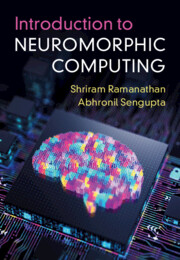Refine search
Actions for selected content:
3312 results in Artificial Intelligence and Natural Language Processing

Knowledge-Infused Learning
- Neurosymbolic AI for Explainability, Interpretability, and Safety
- Coming soon
-
- Expected online publication date:
- March 2026
- Print publication:
- 31 March 2026
-
- Book
- Export citation

Speech Technology
- A Theoretical and Practical Introduction
- Coming soon
-
- Expected online publication date:
- March 2026
- Print publication:
- 31 March 2026
-
- Textbook
- Export citation

Introduction to Neuromorphic Computing
- Coming soon
-
- Expected online publication date:
- January 2026
- Print publication:
- 22 January 2026
-
- Book
- Export citation

Artificial Intelligence in Schools
- Educational Challenges and Opportunities
- Coming soon
-
- Expected online publication date:
- December 2025
- Print publication:
- 30 October 2025
-
- Book
- Export citation
2 - User Interaction for Human–AI Interaction and Collaboration
-
-
- Book:
- Human-AI Interaction and Collaboration
- Published online:
- 19 September 2025
- Print publication:
- 09 October 2025, pp 14-42
-
- Chapter
- Export citation
1 - Introduction
-
-
- Book:
- Human-AI Interaction and Collaboration
- Published online:
- 19 September 2025
- Print publication:
- 09 October 2025, pp 1-13
-
- Chapter
- Export citation
Contents
-
- Book:
- Human-AI Interaction and Collaboration
- Published online:
- 19 September 2025
- Print publication:
- 09 October 2025, pp v-viii
-
- Chapter
- Export citation
6 - AI-supported Search Interaction for Enhancing Users’ Understanding
-
-
- Book:
- Human-AI Interaction and Collaboration
- Published online:
- 19 September 2025
- Print publication:
- 09 October 2025, pp 135-152
-
- Chapter
- Export citation
5 - AI-supported Crowdsourcing for Knowledge Sharing
-
-
- Book:
- Human-AI Interaction and Collaboration
- Published online:
- 19 September 2025
- Print publication:
- 09 October 2025, pp 110-134
-
- Chapter
- Export citation
Contributors
-
- Book:
- Human-AI Interaction and Collaboration
- Published online:
- 19 September 2025
- Print publication:
- 09 October 2025, pp ix-xiv
-
- Chapter
- Export citation
4 - Credibility Assessment of Human–Generative AI Interaction
-
-
- Book:
- Human-AI Interaction and Collaboration
- Published online:
- 19 September 2025
- Print publication:
- 09 October 2025, pp 82-109
-
- Chapter
- Export citation
Reviews
-
- Book:
- Human-AI Interaction and Collaboration
- Published online:
- 19 September 2025
- Print publication:
- 09 October 2025, pp ii-ii
-
- Chapter
- Export citation
8 - Effective Human–AI Collaborative Intelligence
-
-
- Book:
- Human-AI Interaction and Collaboration
- Published online:
- 19 September 2025
- Print publication:
- 09 October 2025, pp 175-212
-
- Chapter
- Export citation
Copyright page
-
- Book:
- Human-AI Interaction and Collaboration
- Published online:
- 19 September 2025
- Print publication:
- 09 October 2025, pp iv-iv
-
- Chapter
- Export citation
Chapter 10 - Human–AI Collaboration for Scientific Discovery
-
-
- Book:
- Human-AI Interaction and Collaboration
- Published online:
- 19 September 2025
- Print publication:
- 09 October 2025, pp 239-267
-
- Chapter
- Export citation
12 - Conclusion
-
-
- Book:
- Human-AI Interaction and Collaboration
- Published online:
- 19 September 2025
- Print publication:
- 09 October 2025, pp 284-294
-
- Chapter
- Export citation
9 - Human–AI Collaboration for Identifying Health Information Wants
-
-
- Book:
- Human-AI Interaction and Collaboration
- Published online:
- 19 September 2025
- Print publication:
- 09 October 2025, pp 213-238
-
- Chapter
- Export citation
7 - AI for Human and Misinformation Interactions
-
-
- Book:
- Human-AI Interaction and Collaboration
- Published online:
- 19 September 2025
- Print publication:
- 09 October 2025, pp 153-174
-
- Chapter
- Export citation
Preface
-
- Book:
- Human-AI Interaction and Collaboration
- Published online:
- 19 September 2025
- Print publication:
- 09 October 2025, pp xv-xvi
-
- Chapter
- Export citation
3 - Privacy Identification of Human–Generative AI Interaction
-
-
- Book:
- Human-AI Interaction and Collaboration
- Published online:
- 19 September 2025
- Print publication:
- 09 October 2025, pp 43-81
-
- Chapter
- Export citation
